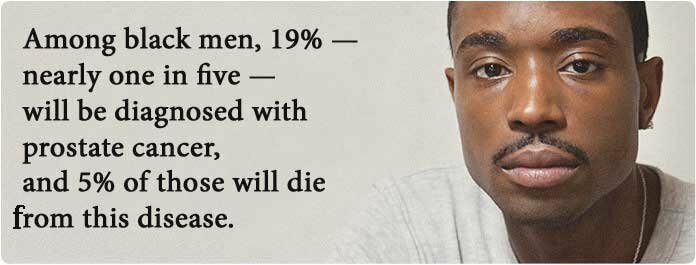 Black men diagnosed with prostate cancer classified as low risk may actually have a more aggressive form of the disease that is more likely to be fatal than in nonblack men placed in the same prognostic category, a new study suggests.
Black men diagnosed with prostate cancer classified as low risk may actually have a more aggressive form of the disease that is more likely to be fatal than in nonblack men placed in the same prognostic category, a new study suggests.
This disparity emerged from research led by a Dana-Farber Cancer Institute scientist and published as a report in JAMA. The study analyzed databases of hundreds of thousands of men diagnosed with prostate cancer and assigned a Gleason score on the basis of a biopsy and examination of samples of the cancer under a microscope. Gleason scores range from 6 to 10, with higher numbers (7-10) indicating greater risk and higher mortality.
The study findings focused on men who were classified as Gleason 6, which signifies a favorable prognosis with a low risk of death, and a cancer that doesn’t necessarily need to be treated – at least not immediately. Many men in this category, after a conversation with their doctor, adopt an “active surveillance” approach, which may include monitoring of PSA (prostate-specific antigen) levels, digital rectal exams, and repeated biopsies. If there is evidence the cancer is progressing, treatment may be warranted.
 However, some men with Gleason 6 cancers opt for treatment rather than surveillance. “Data suggests that African American men who have surgery for Gleason 6 cancers are more likely to have more aggressive surgical features than predicted prior to surgery than nonblack men having surgery,” said Brandon Mahal, MD, of the Department of Radiation Oncology at Dana-Farber and first author of the report. While the reasons for this aren’t clear, he said, “the reasons are likely multifactorial—it could be that Gleason 6 cancer in black men is inherently more aggressive or it may have to do with other non-tumor related factors such as how we perform the biopsies – maybe we are undersampling their tumors and missing more aggressive disease – and lastly there could be other socioeconomic or access to care factors that drive differences.”
However, some men with Gleason 6 cancers opt for treatment rather than surveillance. “Data suggests that African American men who have surgery for Gleason 6 cancers are more likely to have more aggressive surgical features than predicted prior to surgery than nonblack men having surgery,” said Brandon Mahal, MD, of the Department of Radiation Oncology at Dana-Farber and first author of the report. While the reasons for this aren’t clear, he said, “the reasons are likely multifactorial—it could be that Gleason 6 cancer in black men is inherently more aggressive or it may have to do with other non-tumor related factors such as how we perform the biopsies – maybe we are undersampling their tumors and missing more aggressive disease – and lastly there could be other socioeconomic or access to care factors that drive differences.”
The study found that the overall risk of prostate cancer death was not statistically significant between 31,841 black and 160,383 nonblack patients, after accounting for socioeconomic status and treatment patterns. But when the analysis focused on patients with Gleason grade 6 cancer, there were 51 deaths among 12,707 black patients (0.40 percent) versus 155 deaths among 70,938 nonblack patients (0.22 percent) at a median follow-up of 36 months. In other words, the death rate – while low – was almost double in the black men with Gleason 6 disease, even after accounting for socioeconomic status and treatment patterns.
The researchers did a similar analysis in a larger cohort of 62,736 black and 340,286 nonblack men who had been followed for a longer period. The 12-year prostate cancer mortality rate in patients with Gleason scores 7 to 12 was 5.5 percent in black men versus 5.3 percent in nonblacks. But again, a disparity appeared in Gleason 6 prostate cancers: the 12-year mortality rate was 2.2 percent in black patients versus 1.4 percent in nonblacks. This difference, the authors wrote, “support the hypothesis that low-grade prostate cancer may be distinct in black men.”
Asked what the study results imply for clinical practice, Mahal said, “These data would be an impetus for randomized, prospective trials to both better characterize Gleason 6 disease in black men and to test different management strategies,” i.e. immediate treatment versus active surveillance. He said that in the United States, data suggest that an increasing number of men with Gleason 6 prostate cancer are opting for active surveillance, but that option is used less frequently among African American men. “That probably is partly because of provider preferences and partly because of patient preferences—both of which are likely impacted by historically observed disparities,” said Mahal.
The corresponding author of the report is Franklin Huang, MD, PhD, of the University of California, San Francisco.
The research was supported by the Prostate Cancer Foundation, the American Society for Radiation Oncology, and the Department of Defense Prostate Cancer Research Program.
Leave a Reply